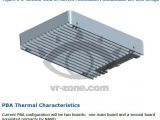So far, most solid-state drives have used the 2.5-inch form factor, or smaller packages like mSATA, but Intel decided it was time for the 3.5-inch form factor to receive some love.
The 3.5-inch form is the one commonly adopted by platter-based hard disk drive units, although HDDs have been experimenting with 2.5-inch and 1.8-inch shapes too.
Still, 3.5-inch remains the most common form, among desktops, servers, data centers and supercomputers.
Intel decided to stray from the “standard” SSD building practices when it made the "Fultondale" and "Pleasantdale" drives.
Well, “made” might be too strong a word for now, since the units have only been spoken of in a web leak at the moment and exist only as renders at this time.
Anyway, the drives are made for data centers and are large, chunky pieces of metal, or rather their casings are.
They have two PCBs inside (printed circuit boards), one to hold the controller, the RAM cache (if used at all) and some NAND Flash chips. The other PCB will have only NAND chips.
Together, the PCBs and the chips installed on them will use 25W of power, which is a lot when factoring in heat issues.
The 2.5-inch form factor isn't favored just because it's pretty. It's also the largest size without potential overheating issues.
So the 3.5-inch SSDs that Intel intends to make and market might end up needing passive heatsinks, despite the metal casings playing the role (they even have metal ridges, for heat dissipation).
Intel will release the "Fultondale" and "Pleasantdale" solid-state drives only in the fourth quarter of 2014 though, so there's enough time to iron out the last details. Yes, that much time from now. You can wait until the Q4-scheduled IDF Beijing (Intel Developer Forum) for the confirmation or invalidation of all these assumptions.

 14 DAY TRIAL //
14 DAY TRIAL // 
